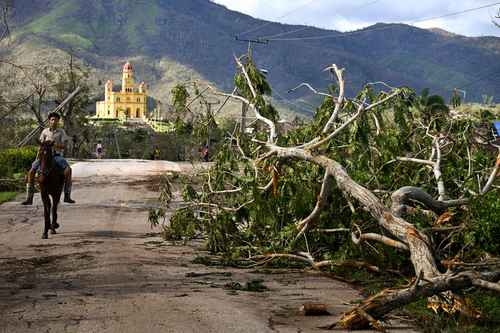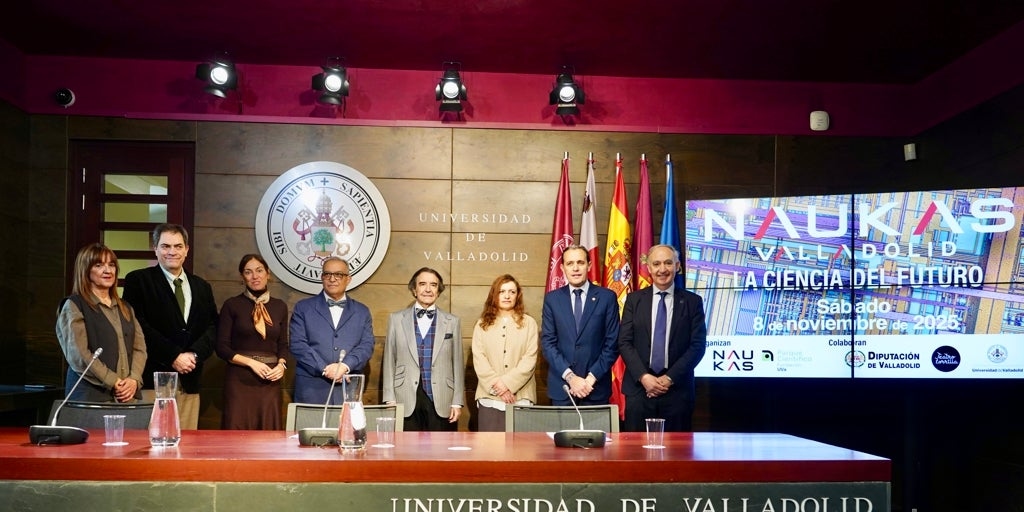Scientists warn that the world is about to enter the era of Category 6 hurricanes

Scientists warn that the world is about to enter the era of Category 6 hurricanes
▲ Hurricane Melissa 's passage through El Cobre, Santiago de Cuba province. Photo AFP
The Independent
La Jornada Newspaper, Thursday, November 6, 2025, p. 6
After devastating Jamaica and Cuba, Hurricane Melissa is moving into the Atlantic, and some scientists warn that we are already entering the era of Category 6 hurricanes.
Fueled by climate change caused by human activity, these storms are more intense, strengthen at an unprecedented rate, and move at high speed. Experts note that they produce winds capable of tearing off roofs and storm surges that flood coastal communities with several meters of water, which can take days to recede, even after the storm has moved away.
Hurricanes are already exceeding the upper limit of the Saffir-Simpson scale, which measures wind intensity and the damage they can cause. This scale, which goes up to Category 5, classifies sustained winds of around 252 kilometers per hour as “catastrophic.” However, since 2013, at least five tropical cyclones would have qualified as Category 6 if such a classification existed.
More and more experts believe that the current scale has fallen short in the face of climate reality, and Melissa 's recent passage seems to confirm that suspicion.
The Category 5 hurricane – the most devastating in Jamaica's history – came close to reaching Category 6, according to climatologist Michael Mann, a professor in the Department of Earth and Environmental Sciences at the University of Pennsylvania, in an interview with The Independent .
It has been proposed that this new category include hurricanes with sustained winds of more than 300 kilometers per hour, capable of causing damage far greater than that which structures built under current category 5 standards can withstand.
“I wouldn’t rule out that, in the post-season analysis, wind estimates will be adjusted and possibly exceed the thresholds of a 'category 6',” he said in an email, agreeing that these supercharged storms are becoming the new normal and that the way they are classified needs to be rethought.
“As long as we continue to use metrics based on wind speed, it no longer makes sense – mathematically, economically, or socially – to artificially limit the scale in category 5,” he added.
Including a category 6 on the Saffir-Simpson scale, in effect since 2010, would allow for the recognition of the growing effects of climate change on hurricanes, including the increased risk of damage caused by more intense storms, Katharine Hayhoe, chief scientist at The Nature Conservancy, explained to The Independent .
Hayhoe believes it might also be necessary to completely redo the scale to incorporate the factor of rainfall, which causes most of the economic impact of hurricanes.
However, not all scientists agree that it is necessary to scale up, and some do not even have a firm stance on the matter.
“I don’t think we need a Category 6. Having an area become uninhabitable for weeks or months is already the worst thing a hurricane can cause,” said meteorologist Phil Klotzbach of Colorado State University.
“The Saffir-Simpson scale has been around for decades,” Zachary Handlos, director of the Atmospheric and Oceanic Sciences program at Georgia Tech, told WCNC. “If we change it, it will be difficult to compare new storms with old ones unless we reanalyze all past data. We would be changing the standard for what we consider a 'major' hurricane.”
Meteorologist Jeff Berardelli wrote in X: “I don’t have a firm stance for or against it. But if we keep seeing storms that are in a different league, we need a way to differentiate them, so to speak.”
How that could be achieved is still unclear. What is clear, however, is that climate change is making storms that intensify with fury, like Melissa , more frequent, and that poses an ever-increasing threat to humanity.
Melissa was one of the fastest intensifying storms in history and tied as the most powerful North Atlantic storm in terms of wind speed and atmospheric pressure.
A recent study by Imperial College London determined that human-caused climate change made Melissa four times more likely, as well as increasing its wind speed by about 18 kilometers per hour.
Rising ocean temperatures are one of the factors intensifying hurricane winds, explained Daniel Gilford, a meteorologist and atmospheric scientist at Climate Central.
“We are at a stage where these storms are already at the top of our scale in terms of intensity, according to the parameters of the Saffir-Simpson scale,” Gilford explained.
And unless greenhouse gas emissions, largely produced by the fossil fuel industry, are reduced, these threats will continue to worsen.
“We’ve been dealt the hand of living in the world we have now. We’re stuck with the warming we’ve already experienced: about 1.3 degrees Celsius above pre-industrial levels. That’s the temperature we’ll be living with for the rest of our lives,” Gilford said. “But we can still prevent the problem from getting worse. If we act now to reduce our emissions, we can limit what’s coming.”
AI tool designed to predict volcanic eruptions up to 12 hours in advance
Europa Press
La Jornada Newspaper, Thursday, November 6, 2025, p. 6
Granada. An international research project led by the University of Granada (UGR) has developed a procedure based on artificial intelligence (AI) and Signal Theory capable of predicting volcanic eruptions at least 12 hours in advance and confirming their end in just three, “a crucial advance for risk management and civil protection.”
This methodology has already been successfully validated in the eruptions of Tajogaite in La Palma (Santa Cruz de Tenerife) in 2021 and in the Volcán de Fuego de Colima (Mexico), and analyzes seismic parameters in real time to "anticipate eruptive events and characterize their behavior."
The study, which has been published in the Journal of Volcanology and Geothermal Research , and in which researchers from the universities of Colima (Mexico) and Canterbury (New Zealand), and the Volcanological Institute of the Canary Islands, in Tenerife, also participate, lays the foundations for a new generation of volcanic forecasting tools.
It is thus a tool for early warning based on an approach that in turn starts from the joint analysis of three specific seismic parameters: Shannon entropy, the frequency index and the so-called kurtosis, which reports on the probability distribution.
Entropy measures the degree of disorder in seismic signals, and its decrease indicates that earthquakes are becoming more organized, a pattern that often occurs just before an eruption. The frequency index, meanwhile, identifies changes in the dominant frequencies associated with different types of magmatic activity, while kurtosis is effective in detecting impulsive seismic events, the University of Granada explained.
jornada





